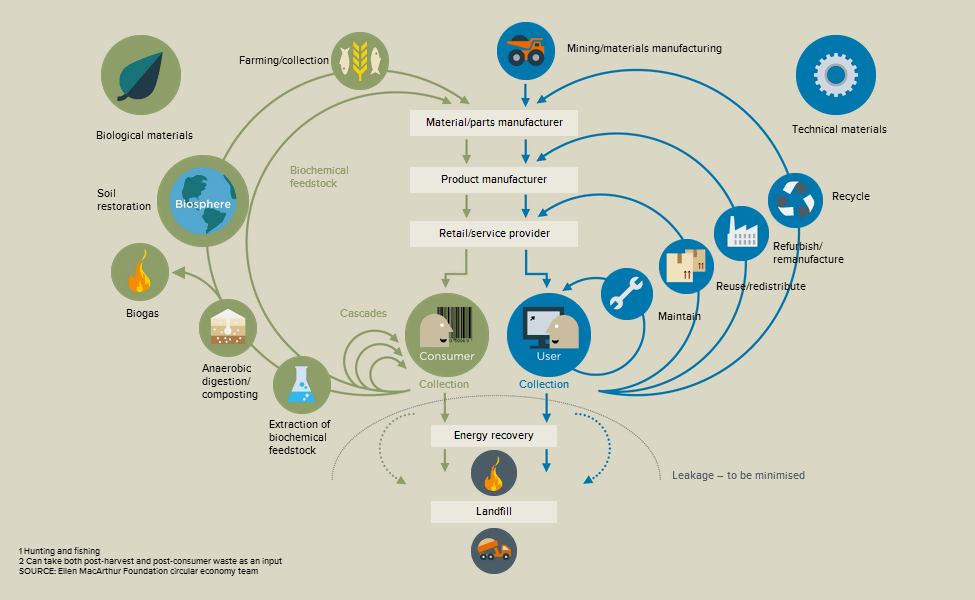
Circular Couture: Shaping a Sustainable Fashion Economy
In the ever-evolving landscape of the fashion industry, the concept of a circular fashion economy is gaining prominence, ushering in a transformative approach that prioritizes sustainability and ethical practices.
1. Redefining Fashion Production
Circular fashion economy is a departure from the linear model of “take, make, dispose.” It emphasizes a circular approach where garments are designed to be reused, recycled, or repurposed. This shift challenges the traditional fashion production model and aims to minimize waste throughout the entire lifecycle of a garment.
2. Extending the Life Cycle of Clothing
A key aspect of circular fashion is the emphasis on extending the life cycle of clothing. This involves creating durable and timeless designs that resist trends and wear, encouraging consumers to keep and cherish their garments for longer periods, reducing the need for constant replacements.
3. Recycling and Upcycling Initiatives
Circular fashion actively promotes recycling and upcycling initiatives. Brands are exploring innovative ways to repurpose old garments into new creations, minimizing the environmental impact of textile waste. This approach aligns with the broader goal of reducing the fashion industry’s carbon footprint.
4. Embracing Second-Hand and Vintage Markets
Circular fashion encourages the embrace of second-hand and vintage markets. By promoting the resale of pre-loved garments, this approach reduces the demand for new production and gives existing items a longer life. Thrifting and buying vintage become not only fashionable but also eco-friendly choices.
5. Sustainable Material Choices
A crucial element of circular fashion is the use of sustainable materials. Brands are opting for eco-friendly fabrics, organic fibers, and recycled materials, reducing the environmental impact of textile production. This commitment to sustainable sourcing contributes to the overall health of the fashion ecosystem.
6. Collaborative Consumption Models
Circular fashion embraces collaborative consumption models. Clothing rental services, subscription boxes, and swap events are gaining popularity. These models promote a sharing economy, allowing individuals to enjoy a variety of fashion while minimizing the accumulation of unused items.
7. Educating Consumers on Sustainable Practices
Education plays a vital role in the success of circular fashion. Brands are taking initiatives to educate consumers about the environmental impact of their choices and the benefits of embracing a circular fashion economy. Informed consumers are more likely to make sustainable choices and support eco-conscious brands.
8. Circular Fashion Economy at beautifulnhealthy.com
To explore the latest insights and trends in the circular fashion economy, visit beautifulnhealthy.com. The platform offers articles and resources that delve into the world of sustainable fashion, providing valuable information for those looking to make eco-conscious choices.
9. Economic and Social Impacts
Circular fashion has broader economic and social impacts. By embracing sustainable practices, brands contribute to job creation in recycling and upcycling industries. Additionally, a focus on ethical and transparent supply chains ensures fair labor practices, fostering a more socially responsible fashion ecosystem.
10. Shaping a Greener Future
Circular couture is more than a trend; it’s a movement shaping a greener future for the fashion industry. As consumers become more conscious of their choices and brands prioritize sustainability, the circular fashion economy becomes a powerful force for positive change, redefining the industry’s standards and values.
In conclusion, circular fashion economy represents a fundamental shift towards a more sustainable and responsible fashion industry. By reimagining the entire lifecycle of clothing, from design to disposal, this approach offers a blueprint for a future where fashion is not only stylish but also in harmony with the planet and its resources.
